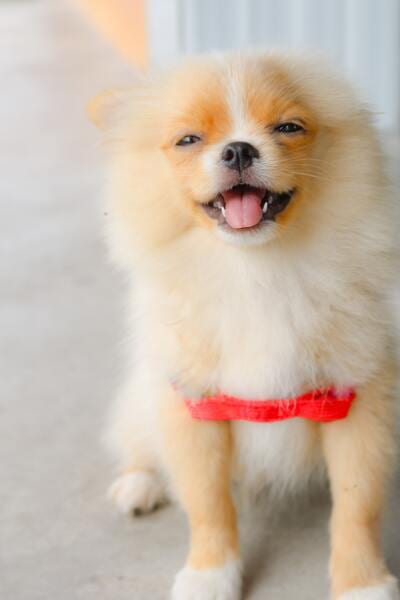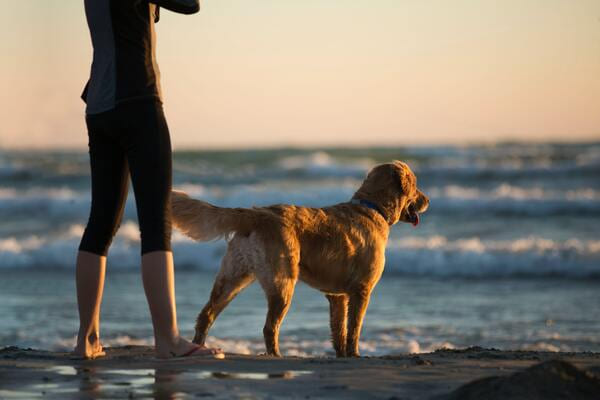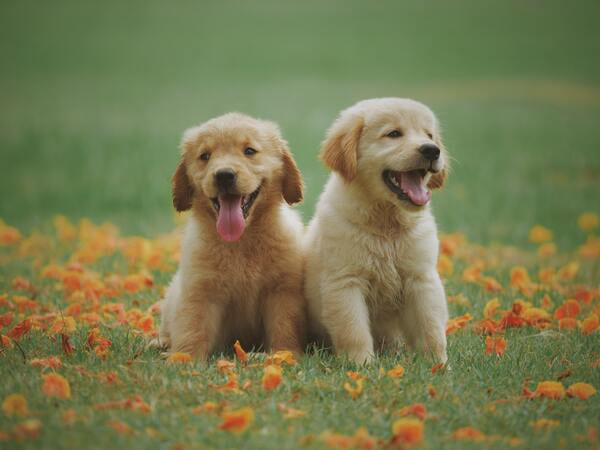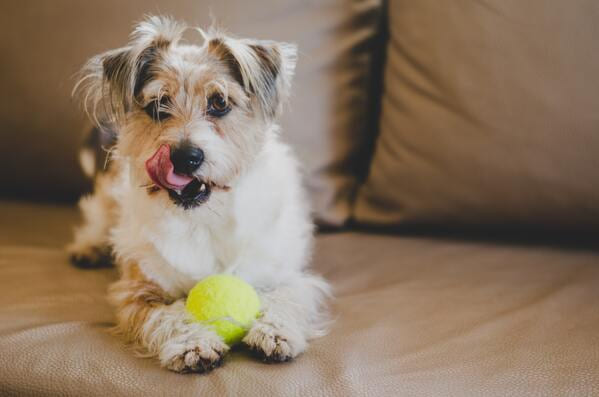

How to Enrich Your Dog’s life
Providing exercise and nutritious food are just part of the equation when caring for a canine. Mental stimulation and enrichment are similarly crucial for keeping dogs happy and healthy throughout their lifelong development.

Writer Animalia Team
9 min read

Imagine being stuck in a house with literally nothing to do: no TV to watch, nothing to read, not even the option to head outdoors and enjoy the pleasant weather. How would you keep yourself entertained? Would you stare out the window or daydream? However you chose to pass the time, it’d definitely get old fast. Sooner or later, you’d be at the end of your wits! The experience might make you think twice, however, before leaving your dog home alone without toys or other sources of mental stimulation.
Providing enrichment for your dog is one of the most important aspects of pet care and it’s easy to incorporate into day-to-day life. Here’s how you can spice up your dog’s life and keep them happy and healthy.
Why is mental enrichment so important for dogs?
The wild ancestors of our domestic dogs lived active lives, spending hours tracking and hunting their food. They didn’t have the luxury of long days spent sleeping on the sofa. Many modern pets do nothing but lounge, lying in wait for their owners. A sedentary lifestyle, characterized by boredom and loneliness, is an unhealthy one.
Dogs and people alike, we all need mental stimulation and enrichment in our life. Without them, we grow bored, anxious, frustrated, and even depressed. Studies show that consistent mental stimulation and enrichment are key for developing a dog’s cognitive, social, and emotional skills as well as reducing stress, preventing boredom, and discouraging unwanted behaviors. Enrichment activities help dogs cope when left alone at home or in kennels. Working on mental enrichment activities together promotes a strong bond and makes for excellent quality time.
The five types of mental enrichment for dogs
A book published in 2013 called Beyond Squeaky Toys highlights five primary types of canine mental enrichment. Using a combination of these can help improve a dog’s quality of life and reduce or eliminate anxious behaviors.
Social: We all know that socialization is one of the most important parts of welcoming home a new puppy. Not everyone realizes, however, that it’s vital to continue the process of socialization throughout your dog’s life. Regularly exposing your pet to new people, animals, places, and situations keeps their confidence levels high, ensuring they’re ready to face down any new experience.
Nutritional: Today’s dogs have it pretty easy. They don’t use their natural scavenging and foraging instincts to get their food, but nutritional enrichment can still safely awaken these instincts. Puzzle food dispensers such as wobble or slider bowls challenge your dog mentally while also encouraging slower eating. Simple but effective homemade ideas include sprinkling kibble on a towel and rolling it up or putting it in cardboard boxes stacked one inside the other. Instead of always using kibble alone, challenge their senses with peanut butter (make sure it doesn’t contain xylitol).
Occupational: Humans domesticated dogs to be working animals and most dogs love having a job to do – especially if they’re a breed who was meant to hunt or herd. Doing a job counteracts boredom and stimulates dogs mentally while helping release surplus energy with extra exercise. Take your dog to agility or scent-trailing sessions, play fetch with different objects or in different locations, and introduce them to simple tasks like fetching the mail or collecting their leash when it’s time for a walk.
Sensory: A dog’s sense of sound and smell is much more highly developed than ours. Stimulating these is particularly beneficial for anxious dogs. Play soothing music, provide calming scents (vanilla, coconut, valerian, and ginger are particularly effective), or play nose games with their favorite toys and treats.
Physical: Dogs love to play and they love physical contact with you, their favorite person. Physical activity offers bonding opportunities and mental enrichment while burning off some of your dog’s excess energy. After an exhausting play session, cuddle up on the sofa together covered with a cozy blanket.
6 Simple ways to make your dog happier, smarter and less bored
Enriching your dog’s life is simpler than you might thing and it doesn’t require a large budget or huge time commitment.
When planning mental enrichment activities for your pet, it’s best to start at an easy level and build up to more complicated games and projects as you both grow in confidence. Make sure every activity is safe and appropriate for your dog’s age and health while remembering that excitement can promote an urge to use the bathroom. Plan regular toilet breaks into your enrichment schedule – for the sake of your pet and your floor.
Your dog will find the mental and physical work tiring and will need a well-earned nap at the end of a session. This rest period helps their brain process what they’ve learned. When deciding which activities to select, let your dog’s breed inform your choice. For example, Labradors were bred to retrieve, Spaniels to track scents, and Terriers to hunt out small prey.
Here are a few ideas to get your dog’s new mental enrichment program started.
Spice up your walks

Dogs have a natural curiosity and your daily walk provides an opportunity to indulge this. Don’t fall into a rut of taking the same old route every day. Spice it up instead with new adventures. Visit a different park, hike a different trail, or simply do your usual errands in a different order. This gives your dog new scents to sniff, sounds to hear, and sights to take in. Remember to allow plenty of time to stop and sniff. This is how dogs communicate with their neighbors.
Maximize social contact

Dogs are pack animals which makes them sociable creatures. They love being given the chance to interact with other friendly animals and people. Enroll in group classes, find dog parks, or set up playdates with friends and neighbors. If possible, stop into some local pet-friendly business with your dog. You’ll be surprised how many people stop by to say hello. It’s important, however, not to force social interactions on your pet. If your dog appears stressed or aggressive, put a stop to socialization and slow down future interactions.
Provide mental enrichment toys and games

Some dogs have a favorite toy they love to carry around, chew, or play tug of war with. Make sure you’re always encouraging them to try out new toys by regularly introducing new ones to their rotation. Add puzzle toys into the mix to challenge them even more. Rotate them around so over-familiarity and boredom doesn’t set in.
You can teach an old dog new tricks
If your dog has learned to stay, sit, or lie down, you’ve already managed to teach them some tricks. Most dogs are capable of learning much more than these basics. Doing so really challenges their gray cells and can increase their overall concentration. It’s also a good way to boost the confidence of shy or nervous dogs. Simple tricks to start with include weaving between your legs or shaking paws. They always look impressive, but they are really easy to teach.
Play together
Here are just a few games to try with your pet.
- Let your dog hunt for treats around the house or in the yard. This is a good way to get dogs to settle in if you’ll be leaving them alone for a while.
- Train them to play hide-and-seek by simply disappearing behind a door or the sofa to start with. Praise your pet enthusiastically when they “find” you and gradually make it more challenging by hiding in different places.
- Fill a kiddie pool with plastic balls or bottles and hide a favorite toy or some nutritional treats in it. You’ll enjoy watching your dog search them out.
- Challenge your pet’s senses with the three-cup game. Turn three paper cups upside down and put a treat under one of them. Then, shuffle the cups. Your dog will quickly learn to sniff out the treat.
- Tug of war is great for burning off excess energy. Before you start, make sure they have a good grasp of the “drop it” command in case they get too boisterous.
- If taking your dog to agility classes isn’t possible, create your own agility courses at home. It’s easy to set up safe yet challenging ones if you get creative with common household objects. Not only does it challenge your dog’s brain, but it also teaches them to follow an increasingly complex set of instructions.
Provide for your dog’s physical and mental health
No one is going to be able to keep a better eye out for your dog’s wellbeing than you. Keeping them engaged and spending quality time together are both excellent starting points. But that’s not enough. A comprehensive pet insurance policy will allow you to provide your pet with the best medical, physical and mental care at every stage of their life. Get a quote from Animalia today.





We offer the most
comprehensive coverage
out there
car with a spare tire for life’s bumps.
Having Animalia is like a pimped-out
Rolls Royce with a swimming pool
in the trunk.



Get your pet insurance quote
Pet type
- Dog
- Cat




